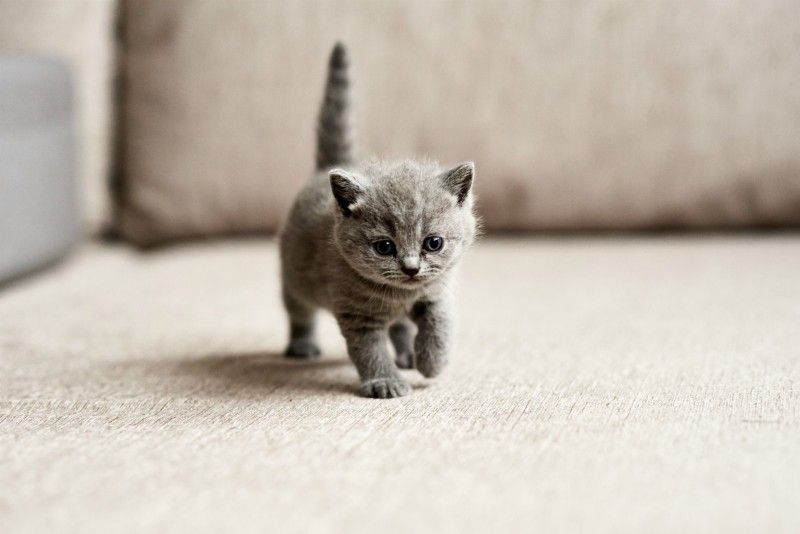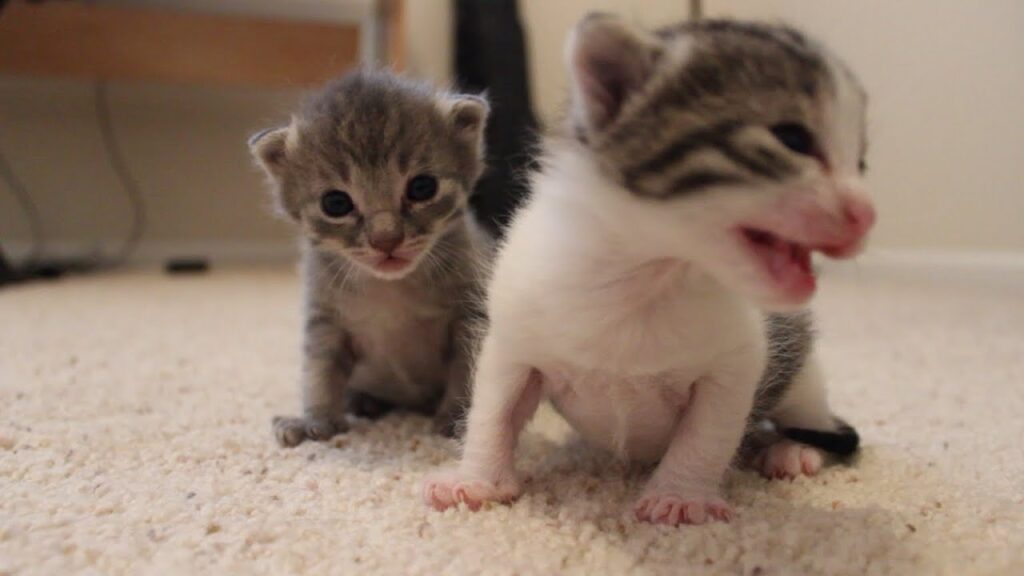Last updated on August 5th, 2024 at 11:22 pm

Finding a kitten outdoors can be both an exciting and daunting experience.
One of the most critical steps in ensuring their proper care is determining their age.
Kittens develop rapidly, and specific physical and behavioral milestones can help pinpoint how old they are.
This guide will walk you through the various stages of kitten growth and provide you with the knowledge to accurately estimate their age.
Understanding Kitten Development Stages

Kittens grow quickly, and each week brings significant changes in their appearance and abilities.
Here’s a detailed look at the different stages of kitten development:
Newborn Kittens (Under 1 Week)

Newborn kittens are incredibly tiny, usually weighing between 3 to 8 ounces. At this stage:
- Eyes and Ears: Their eyes are completely shut, and their ears are folded down against their heads.
- Mobility: They cannot walk yet and primarily depend on their mother for warmth and nutrition.
- Sounds: Despite their immobility, they can purr and make soft, adorable noises.
- Umbilical Cord: Often, the umbilical cord is still attached and visible.
- Care Needed: Newborn kittens require intensive care, including feeding every two hours and stimulation to help them urinate and defecate.
1-2 Weeks Old

As kittens reach the 1 to 2-week mark, noticeable changes occur:
- Eyes: Their eyes start to open, usually around 7 to 10 days old, revealing blue eyes which are a hallmark of young kittens.
- Ears: Their ears begin to unfold, making them more responsive to sounds.
- Mobility: They start to crawl and make attempts to snuggle and knead with their tiny paws.
- Weight: They typically weigh between 8 to 11 ounces.
- Care Needed: Kittens still need regular feeding, though their feeding intervals can begin to extend slightly.
3 Weeks Old

By three weeks, kittens exhibit more advanced behaviors:
- Eyes and Ears: Both are fully open, and they respond to light, sound, and movement.
- Mobility: They begin to stand up and take their first wobbly steps.
- Teeth: Baby teeth start to emerge, making them more curious about solid food.
- Weight: Their weight ranges from 7.5 to 14.5 ounces.
- Care Needed: Introducing them to a shallow litter box is beneficial at this stage as they start to explore their environment more actively.
4-5 Weeks Old

Kittens between 4 and 5 weeks old display significant growth and playful behavior:
- Eyes: Their eye color starts changing from blue to their permanent adult color.
- Mobility: They run, play, dig, and pounce, showing typical kitten antics.
- Feeding: They begin to wean off their mother’s milk or bottle-feeding and start lapping up formula or soft food.
- Litter Training: They can use a litter box more effectively.
- Weight: They weigh between 8 to 16.75 ounces.
- Care Needed: Gradual introduction to solid food is crucial, along with plenty of social interaction and playtime.
6-7 Weeks Old

During this period, kittens continue to develop their physical and social skills:
- Eyes: Their eye color change completes, and they gain better vision.
- Mobility: They exhibit more refined and coordinated movements.
- Feeding: Solid food becomes a larger part of their diet, reducing the need for milk.
- Social Skills: They become more interactive with their littermates and humans, learning social cues.
- Weight: They typically weigh around 1.5 to 2 pounds.
- Care Needed: Continued socialization and exposure to various stimuli help them develop into well-adjusted adult cats.
8 Weeks Old

At 8 weeks, kittens are often ready for adoption:
- Appearance: They resemble miniature versions of adult cats.
- Mobility: Their movements are agile and confident.
- Feeding: They can eat dry or wet cat food exclusively.
- Social Skills: They are fully engaged in play and exploration.
- Weight: They weigh around 2 pounds.
- Care Needed: Vaccinations and a check-up by a vet are recommended at this stage.
Determining Kitten Age: Key Indicators
When assessing a kitten’s age, consider these key indicators:
- Weight: Weighing the kitten provides a good baseline for age estimation.
- Eye Development: The opening of eyes and subsequent color change are critical markers.
- Ear Position: Folded ears are indicative of very young kittens.
- Mobility and Behavior: Observing how a kitten moves and interacts with its environment can reveal its developmental stage.
- Teeth: The emergence of teeth and the transition from baby to adult teeth are significant indicators.
Why Determining Age Matters
Accurately determining a kitten’s age is crucial for several reasons:
- Feeding Requirements: Younger kittens need more frequent feedings and specific nutrition.
- Medical Care: Proper timing of vaccinations and deworming depends on the kitten’s age.
- Socialization: Early socialization is vital for developing a friendly and well-adjusted adult cat.
- Adoption Timing: Ensuring kittens are ready for adoption involves meeting developmental milestones.
Conclusion
Recognizing and understanding the developmental stages of kittens is essential for providing appropriate care.
Whether you’re fostering, adopting, or simply caring for a found kitten, this knowledge will ensure they grow into healthy, happy cats.
Remember, while kittens older than four months are best left in their outdoor environment and should be neutered, vaccinated, and returned, younger kittens need a different approach.
With careful observation and timely care, you can support these adorable furballs through their crucial early weeks of life.

Akash Singh is a finance enthusiast who shares valuable insights on various calculators.
